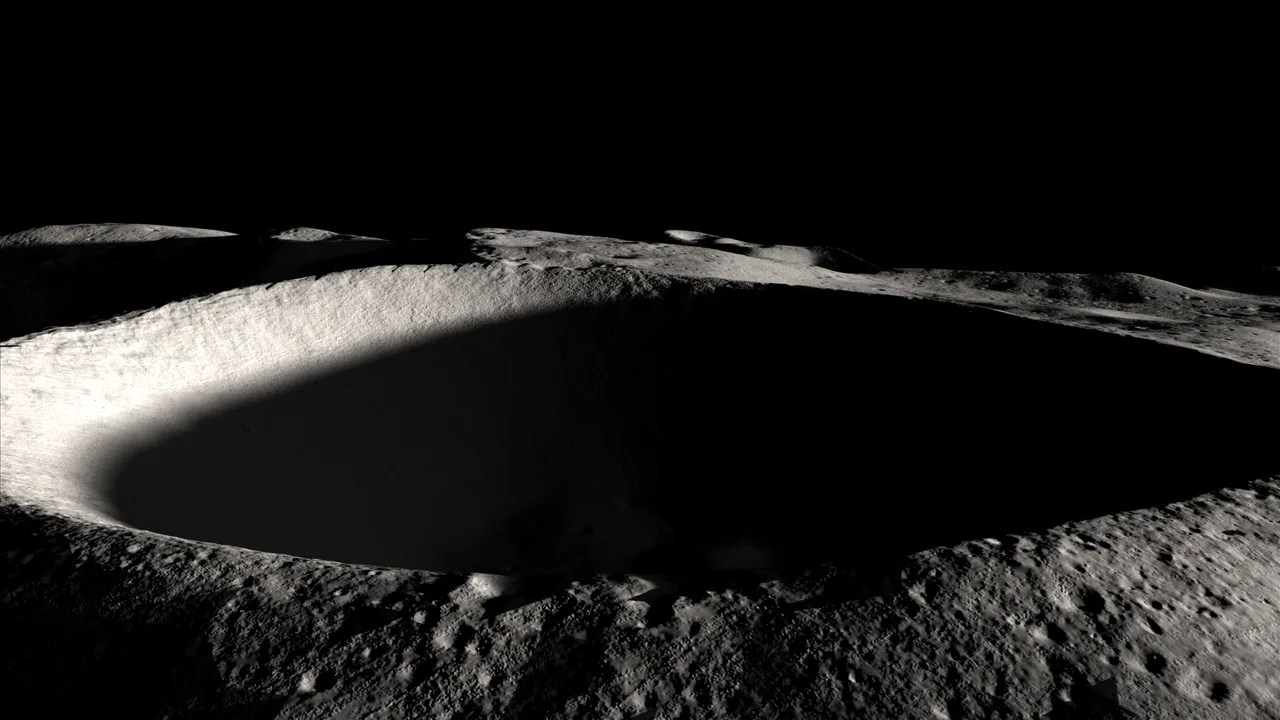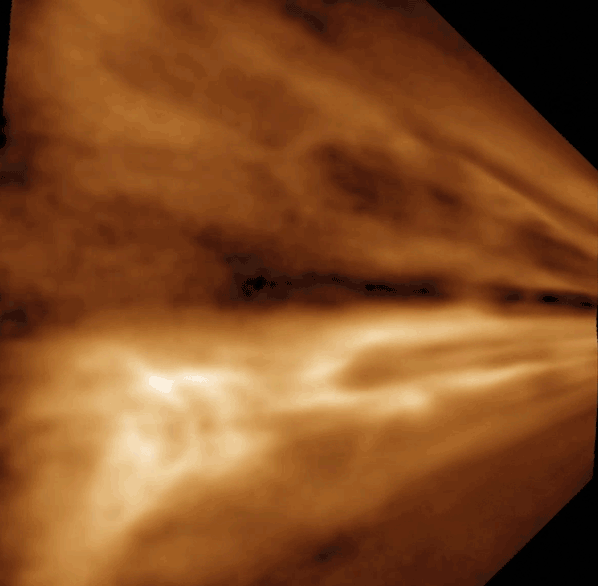Weather on the Moon
On the Moon, snow does not fall. Thunder never rolls. No clouds form in the pitch-black sky. “Weather” on the Moon means something completely different than it does on Earth. The lunar climate is dominated by temperature swings of hundreds of degrees, incoming space rocks of all sizes, and particles and energy traveling from the Sun and beyond.
Extreme Exosphere
Searing heat and bone-chilling cold are both common on the Moon, and changes in temperature are quick and dramatic, because the Moon doesn’t have an atmosphere like Earth does. One cubic centimeter of Earth’s atmosphere contains one hundred trillion times as many molecules as the same amount of space near the lunar surface. In other words, the lunar environment is almost empty, but not quite. The barely-there layer of gas around the Moon is called an exosphere.

The lunar exosphere is too skimpy to trap or spread the Sun’s energy, so differences between sunlit and shadowed areas on the Moon are extreme. Temperatures near the Moon’s equator can spike to 250°F (121°C) in daylight, then plummet after nightfall to -208°F (-133°C). In deep craters near the Moon’s poles, permanent shadows keep the surface even colder — NASA’s Lunar Reconnaissance Orbiter has measured temperatures lower than -410°F (-246°C). These forever-dark places harbor ice deposits that may be billions of years old.
Weather from Space
The Moon’s exosphere is much too thin to produce weather as we know it on Earth. Instead, lunar “weather” comes straight from space.
Solar Wind
An ongoing stream of solar “wind” gives the Moon a sunburn, charges the lunar landscape with static electricity, and supplies chemical ingredients that could make water.
Learn More
Galactic Cosmic Rays (GCRs)
Galactic cosmic rays arrive from distant reaches of the Milky Way, and sometimes even from other galaxies. These rays can break the Moon’s surface atoms apart, releasing radiation.

Coronal Mass Ejections (CMEs)
Shock waves from giant eruptions on the Sun deliver occasional bursts of high-energy particles to the Moon. These eruptions are called coronal mass ejections, or CMEs.

Micrometeoroids
Micrometeoroids, and sometimes larger space objects, pelt the lunar surface. This dry shower of debris shuffles materials in the Moon’s exterior layers, exposing fresh material in a process known as impact gardening.

Writer: Caela Barry, NASA's Goddard Space Flight Center
Science Advisor: Liam Morrissey, Memorial University of Newfoundland
